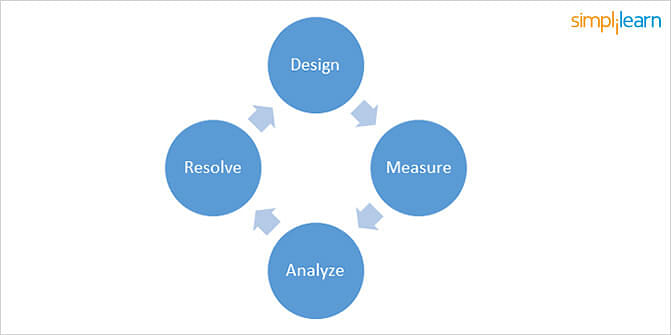Desperate to improve your business results?
Step #1 - KNOW what those results are! As Edwards Deming used to say “In God we trust; all others bring data”.
Most leaders complain that their employees don’t accomplish and can’t deliver results, or that they do not meet goals, but the question is, do they really know what those goals are? Do they know how far or how close they are from their objective? Have they agreed upon how they intend to meet that objective? Well, usually the answers to all these questions is NO.
Many companies already know the benefits of having scorecards to showcase results, but they are still not as well implemented as they could be.
Measuring results is so important that 2 of the 5 steps in the DMAIC methodology relate to measuring: measure (the M of DMAIC) and control (the C or last step).
My ideal business scorecard is one that is developed and planned by all parties involved, has been measured and shared by all stakeholders involved at any time, and is analyzed by everyone to take action (not to blame).
Let’s go over each of these steps, in order:
1. Designed by all parties involved
The values to be measured on the scorecard should be agreed upon by everybody that will be reviewing these numbers - that is, both the leadership and the operations teams. Everybody needs to understand why these values are important and where the objectives are coming from. The measure phase in the DMAIC will help you analyze the historical results to define if we are Ok or if we need to accomplish more. For instance, let’s say you want to reduce your operating costs.
You would first need to know the real values you had in the past, and then come up with an ideal estimate for the year after. To arrive at an ideal figure, both the leadership and operations teams need to analyze past results and evaluate which items could be reduced and how, and in the process, arrive at the objective.
At many companies, 10% is generally taken to be a reasonably good figure by senior management, and this is then communicated to the employees. By discussing the objective with teams, you can not only reach a better desired value, like 20%, but also you get the required buy-in from all employees.
2. Measured and shared
In the control phase, results are measured in order to be monitored. Measuring can be done in several ways, but what is important is that it is done “on-line”; that is, the employee that is performing the task can identify how well s/he is doing at the right time. If the employee worked in a silo and is only able to gauge how well they performed by their paycheck, it’s difficult for them to identify how to improve. Teaching them how to improve is not necessarily more efficient either, since you learn better by doing than by listening.
Each employee can just track their own results on white boards or Excel sheets, or if the process doesn’t allow that, daily status meetings can help. That is, if you know how you are doing, you can do something about it. Imagine you are driving but your speed counter is not working, so you don’t know for sure how fast you are driving. You only can guess by comparing to the other cars.
Well that is something you need to avoid at your company. Employees need to know exactly what their current “speed” is, and what their control limits are. Millennials, for example, can even be motivated to align their process with Lean Six Sigma. Some public vans, for example, are designed to make a sound when their speed is over the allowance so that even passengers are able to control the driver.
3. Analyzed
The aim of measuring and sharing results is not just to have some numbers to fill in our monthly charts, but to be able to act upon them. Analysis is the one action that many companies fail to accomplish correctly. Every time you get a report, you and your team should be able to understand it, identify issues, and discover the root causes.
Many companies just have a quality team to analyze results. It’s up to the kind of process you are working on, but the ideal would be to make sure the same employee that is doing a job can measure his results and analyze them for improvement.
On the other hand, management should be able to analyze the results as well and provide feedback when the process swerves off-track. Efficient feedback is that which is delivered in a timely manner. Control charts are a very useful tool to help employees identify on their own when a process is going out of control, (from doctors to machine workers, no matter your position or education level).
Consider a receptionist. What if she had a means of knowing daily how much time she took to attend to each customer and how well she did it? Remember that receptionists are the main front-facing point-of-contact for many business, and there are occasions when you just avoid buying from a company because you don’t like a receptionist. Sadly, the problem is that they hardly receive the right kind of feedback to be able to improve their performance. Services are usually harder to track, but ERP systems and mystery shoppers can help a great deal.
4. Resolved
The fourth step is to actually do something with insights from your analysis. If employees realize that you measure but don’t actually take action, they would not be inclined to do anything about improvement. As a leader, you need to make sure you find or help your employees find solutions, and that the solutions are finally implemented and the issues closed.
Once you start closing items, you will realize that your problems will start decreasing dramatically. 80% of the issues are recurrent, and are caused by management decisions not taken on time. You can use a check-list to track ideas and implementation due-dates.
So, to be able to improve your results, you need to make sure everybody knows what to measure, and how to go about it. On the part of management, they key is to train every employee to perform self-evaluations, and train your leaders to not just monitor but to do something about it.
Remember that the DMAIC is a cycle; you need to measure, monitor your business results, and after that you need to start over to define what to do about it. And that’s what continuous improvement is all about!
If you need more information on the DMAIC cycle, check out Simplilearn’s Lean Six Sigma Green Belt certification course here.
